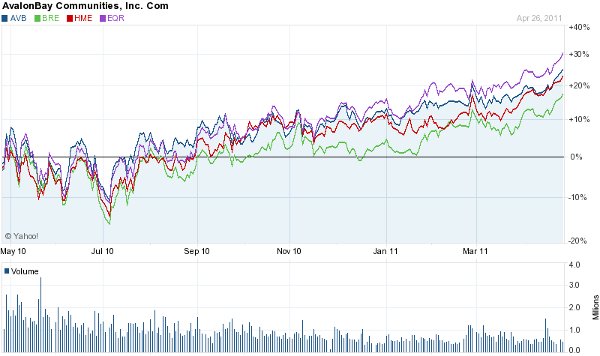The great thing about having lunch in a neighborhood bar in Baltimore is that you never know who you’ll run into pounding beers at 12:30 on a Tuesday.
Hiding behind the poker machine in the dark corner on yesterday’s stop, I found my old pal Charlie.
Munching on the last bite of coddie cake with crackers, he looked like he had had a few…
“What’s wrong pal?” I asked him with a chuckle. “Has the Case-Shiller Index got you down in the dumps again?”
It was at that moment I realized I had gone too far. The look he shot me was one I had seen before.
You see, long before Chuck ever became a realtor, the guy was one of the toughest dudes ever to tote the rock.
And after smashing his head against his locker for a while in the pregame, his eyes took on a certain glaze that let you know he was about to get busy…
Those cold, dead eyes were staring back at me, and I suddenly wished I’d just gone to the salad bar at the grocery store. But that’s when I decided to sit a few stools down and quickly change the subject. As it turns out, a little talk about the kids made for much better conversation.
Six years into our long-running housing debate, I think it’s probably a good time to let it all quietly end.
The Housing Market is Still Broken
Meanwhile, the object of our little banter quietly continues to drop, no matter how many beers Charlie drinks.
After trillions of dollars down the rat hole, Humpty Dumpty can’t be put back together again.
According to the Case-Shiller Index, property values in 20 cities fell 3.3 percent from February 2010, the biggest year-over-year decrease since November 2009.
“There is very little, if any, good news about housing. Prices continue to weaken, trends in sales and construction are disappointing,” says David M. Blitzer, chairman of the Index.
What’s more, Robert Shiller himself said yesterday he is “pessimistic”, and believes that home prices could go down “much more” than the predicted “five or ten percent decline”…
If true, that would practically ensure a housing double dip.
Take a look:

A picture, as they say, is worth a thousand words. And this one translates to U.S. home prices having tumbled 32 percent from a 2006 peak to a nine-year low — which beats the 27 percent drop seen in the first five years of the Great Depression.
And Charlie is not the only guy bothered by it…
According to CoreLogic, 11 million U.S. homes were worth less than their mortgages at the end of 2010, while an additional 2.4 million borrowers were teetering on the brink with less than five percent equity. As a result, a full 28% of all U.S. mortgages could go “underwater” as the price drop continues.
As a homeowner, I don’t like it much, either.
The Best Free Investment You’ll Ever Make
Join Wealth Daily today for FREE. We’ll keep you on top of all the hottest investment ideas before they
hit Wall Street. Become a member today, and get our latest free report: “Why You Need to Fire Your Money
Manager.”
It contains full details on why money managers are overpaid and provides you with
tools for growing your wealth.On your own terms. No fees, no comission.
Bullish on Apartment REITs
But if Charlie had been open to discussing it all, I would have given him this glimmer of hope in the housing sector: I’m bullish on apartment REITs.
Here’s why…
Since the magnitude of the housing crash has caused the share of people who said a home was a safe investment to fall from 83% in 2003 to just 64% today, the biggest beneficiary has been the rental business.
It is the only other place for the market to turn to.
According to Bloomberg, U.S. apartment vacancies have dropped to the lowest levels in three years. In the first quarter, the vacancy rate declined to 6.2% from 8% the previous year.
With rental demand now rising, lease prices have followed suit.
According to Reis, a commercial real estate outfit, effective rents have since increased in 75 of 82 markets — with rents climbing to an average of $991 a month from $967 a year earlier.
Needless to say, that sets up perfectly for the nations landlords as the “ownership society” wobbles.
Turns out apartment-based REITs have been the one pocket of strength since the housing bubble burst.
That being said, here are four of them that have been on the rise of late:
-
AvalonBay Communities Inc. (NYSE: AVB): Founded in 1978, AVB is the second largest publicly-traded U.S. apartment owner, with over 45,000 apartments in 10 states. The company pays a 2.90% dividend.
-
BRE Properties (NYSE: BRE): San Francisco-based BRE owns 75 properties in the West comprising 21,318 units. The company pays a 3.10% dividend.
-
Home Properties Inc. (NYSE: HME): With properties in the Mid-Atlantic, HME has over 38,000 properties and pays a 4.10% dividend.
-
Equity Residential (NYSE: EQR): Equity Residential owns or has investments in more than 450 properties in 17 states and the District of Columbia. EQR pays a 2.30% dividend.

As you can see, all of them are up big over the course of the last year in a trend that will likely continue.
The best part for investors is that they can win both ways in this sector — first with price appreciation; second with a nice dividend.
So yes, Charles, real estate is not completely dead… You just need to invest in the right piece of it. And these days, that’s in the rental space.
So even in the dark corner of a bar at noon, you can somehow manage to find the silver lining in practically everything — even housing.
If not, there’s always the giant jar of pickled hardboiled eggs to make you happy.
Your bargain-hunting analyst,
Steve Christ
Editor, Wealth Daily

